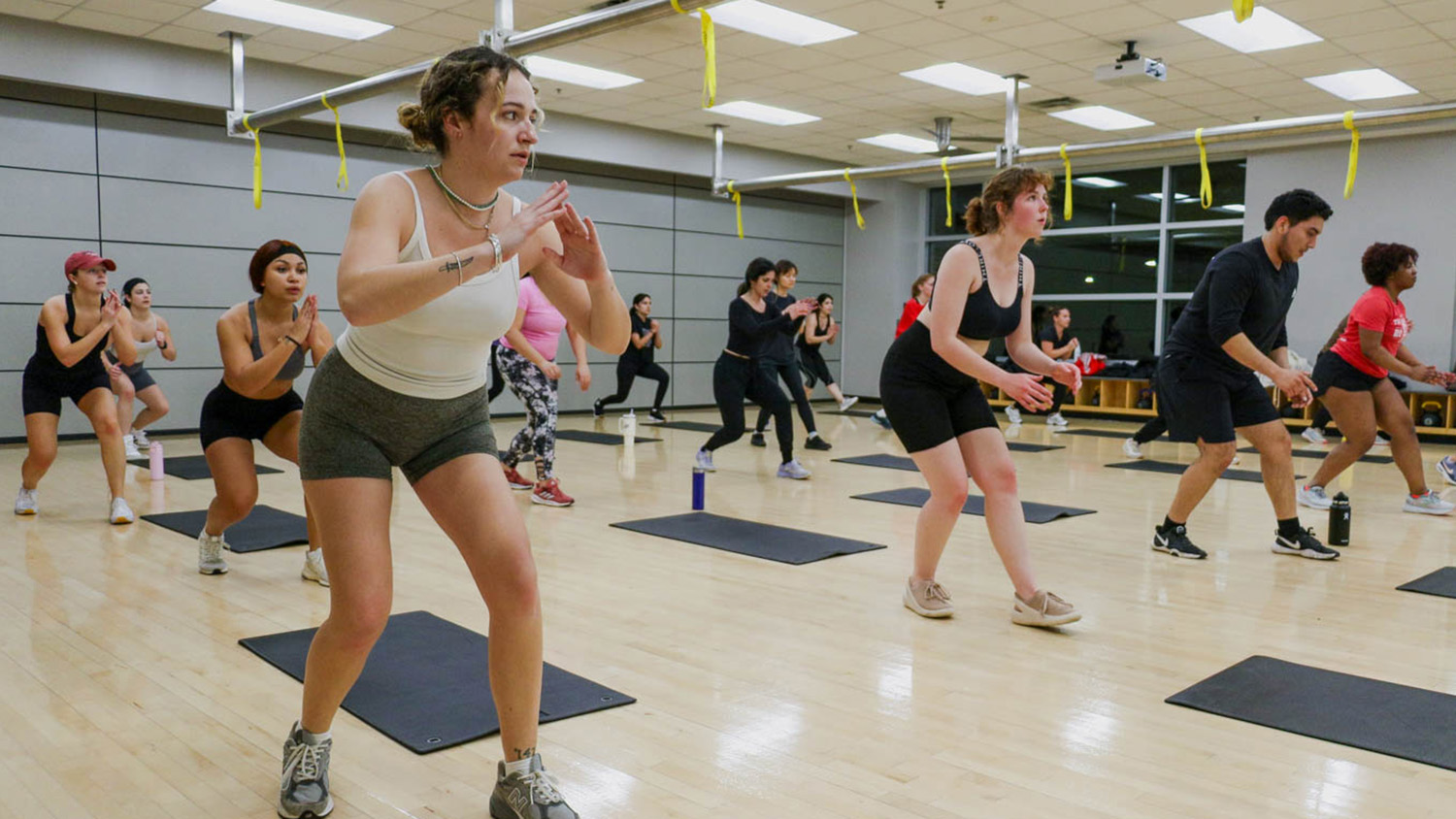Seven Benefits of Regular Yoga

By: Remi Oswald ‘19, communications
As the cold weather creeps in, indoor fitness activities become a popular choice for student’s daily workouts. Lucky for you, Wellness and Recreation offers a wide variety of indoor facilities and fitness classes. Not so lucky for you, you are faced with the difficult task of choosing one of the many fitness activities to do.
How about yoga?
Yoga offers a fun and personalized approach to strengthening your body and mind. There is a wide variety of yoga disciplines that are designed to target specific areas of the body. Each discipline focuses on strength, flexibility and concentration. Stretch your mind and discover the seven greatest benefits that regular yoga can do for you.
Supports The Mind
Yoga emphasizes how we breathe, think and interact with others. Unlike other exercises, it focuses on benefiting participants both physically and mentally. A significant element of this discipline is concentration. Yoga trains the mind to focus on the body’s movement and position, as well as any noticeable breathing patterns. This kind of mindfulness training results in increased body awareness increased concentration and improved mental clarity.
Suggested yoga class for the mind: Gentle Yoga
Improved Balance
“Balance is key to all functional movements,” said Sophia Davis, yoga instructor. “It helps your postural equilibrium, muscular balance, joint dynamics, neuromuscular system and stability.” Yoga poses begin at the core. “Yoga activates deeper, internal core muscles like the Transverse Abdominis and inner obliques,” said Davis. Strengthening these areas improves the body’s physical balance. Improving balance is an indication that you are better at controlling your body.
Suggested yoga class for balance: Stand-up Paddleboard Yoga
Increased Strength
Yoga exercises tend to focus on the body’s core, arm, back and leg muscles. Yoga poses are largely reliant on the body’s ability to hold and balance. Bodyweight exercises used in yoga are proven to be extremely effective in strengthening the body. Some positions combine strength training and traditional yoga poses, to ensure it is physically challenging on the body. Regular training in bodyweight exercises such as yoga poses are great for improving the body’s overall strength.
Suggested yoga class for strength: Yoga Sculpt
Increased Flexibility
A significant number of yoga poses are designed to stretch the body’s muscles and increase your range of motion. Yoga requires the body to move through difficult ranges of motion, where the body must hold, sometimes uncomfortable, positions. Despite initial discomfort, regular practice of these movements creates increased flexibility. Increased flexibility is beneficial for everyday movements, such as getting out of bed and lifting your bag from the floor.
The flexibility developed by completing these exercises also reduces the risk of injury. This makes yoga a great partner to other exercises. It strengthens muscles and joints and increases the body’s range of motion. Alternative exercises, such as weightlifting and running can benefit significantly from an increase in flexibility.
Suggested yoga class for flexibility: Power Yoga

Increased Energy
Just like most exercise routines, yoga increases participant’s energy. Yoga requires the mind to concentrate on the body and focus on the mind, resulting in less stress. A decrease in stress results in an increased amount of energy. “Studies show certain yoga poses can increase cortisol levels, which in turn minimizes fatigue and increases energy,” said Davis.
Suggested yoga class for energy: Yogalates
Better Stress Management
“Yoga is a system of physical, mental and spiritual practices,” said Davis. The poses place the body and mind in a position of deep rest, with little to no muscle engagement. This allows the mind to switch the body into rest and decompress mode. Calming the body and mind decreases the amount of stress experienced.
Yoga is also beneficial for emotional release. It is common for our minds to misconstrue emotional blockage for stress. Both consciously and subconsciously, our body’s and minds release emotions through the physical practice of yoga. Specifically through the hip and shoulder stretches, as those areas hold the most tension.
Suggested yoga class for stress benefits: Restorative Yoga

Improved Respiratory Health
Breathing is a significant component of Yoga. It is important to focus on your breath for optimal concentration and to relax the mind. “Practicing breath work allows you to breathe more deeply, giving blood cells more oxygen and in turn revitalizing your whole system,” said Davis. Yoga works to decrease shallow, quick breathing which is known to cause anxiety.
Suggested yoga class for breathing: Yoga Flow

Engaging in regular yoga classes can help you become physically fit, stress-free and positive. With consistency and commitment to the discipline, your body is more likely to gain the physical and mental benefits faster and easier.
If you’re interested in starting your own yoga journey, start slow with a class once or twice a week to ensure you remain consistent.
“Yoga unifies people of varying cultures, ages, backgrounds and genders,” said Davis. “Yoga is the link, unifying your physical body, your mind body and your spiritual body.” If you’re interested in yoga, take a look at our group fitness schedule, featuring multiple yoga options or give advanced yoga a shot with small group training. Further, if you are looking for a more personalized training, there are options for one-on-one yoga.
- Categories:



